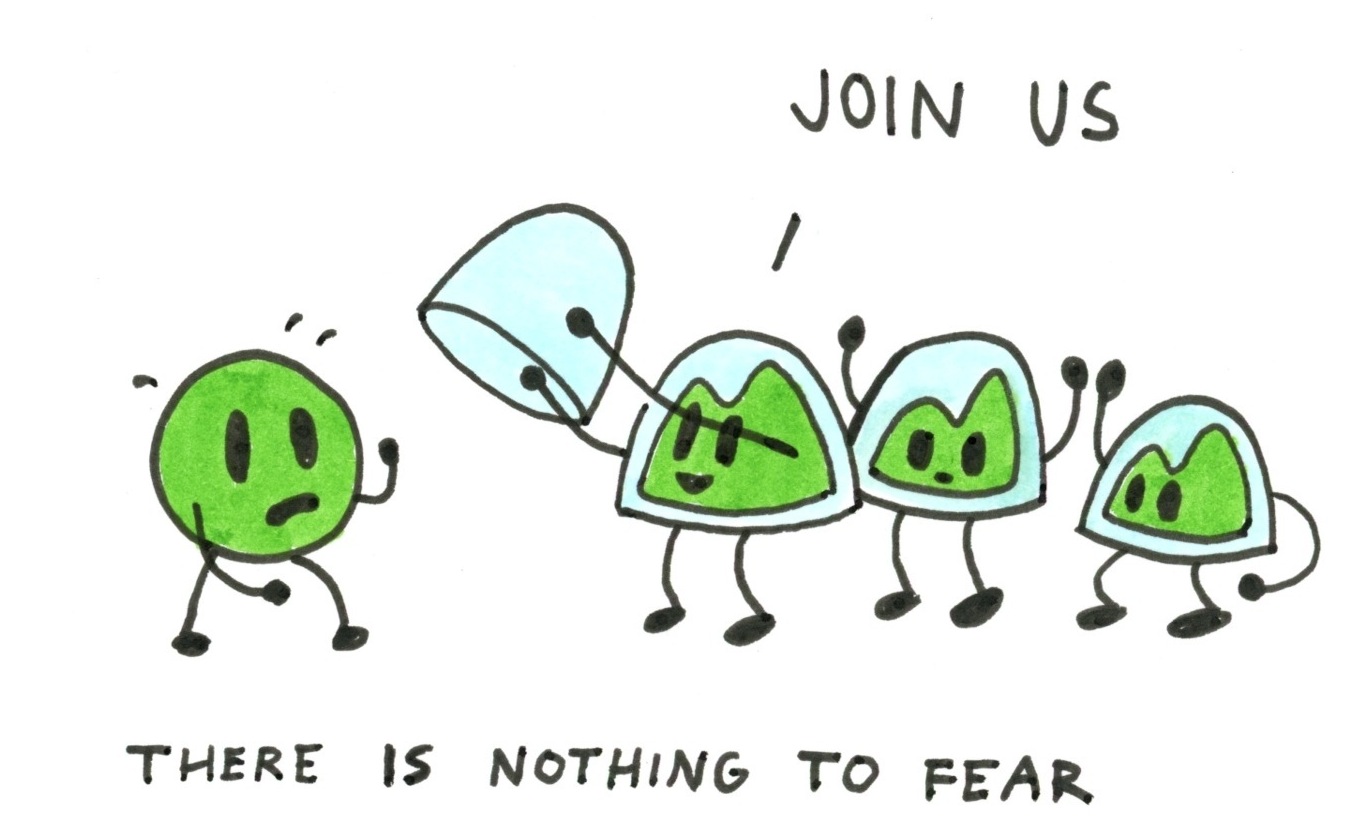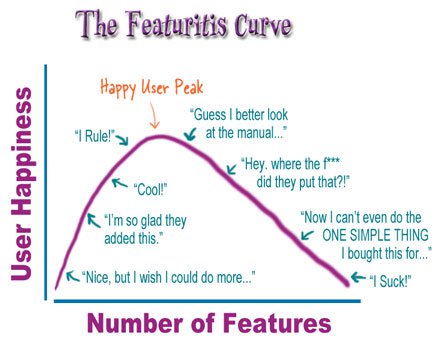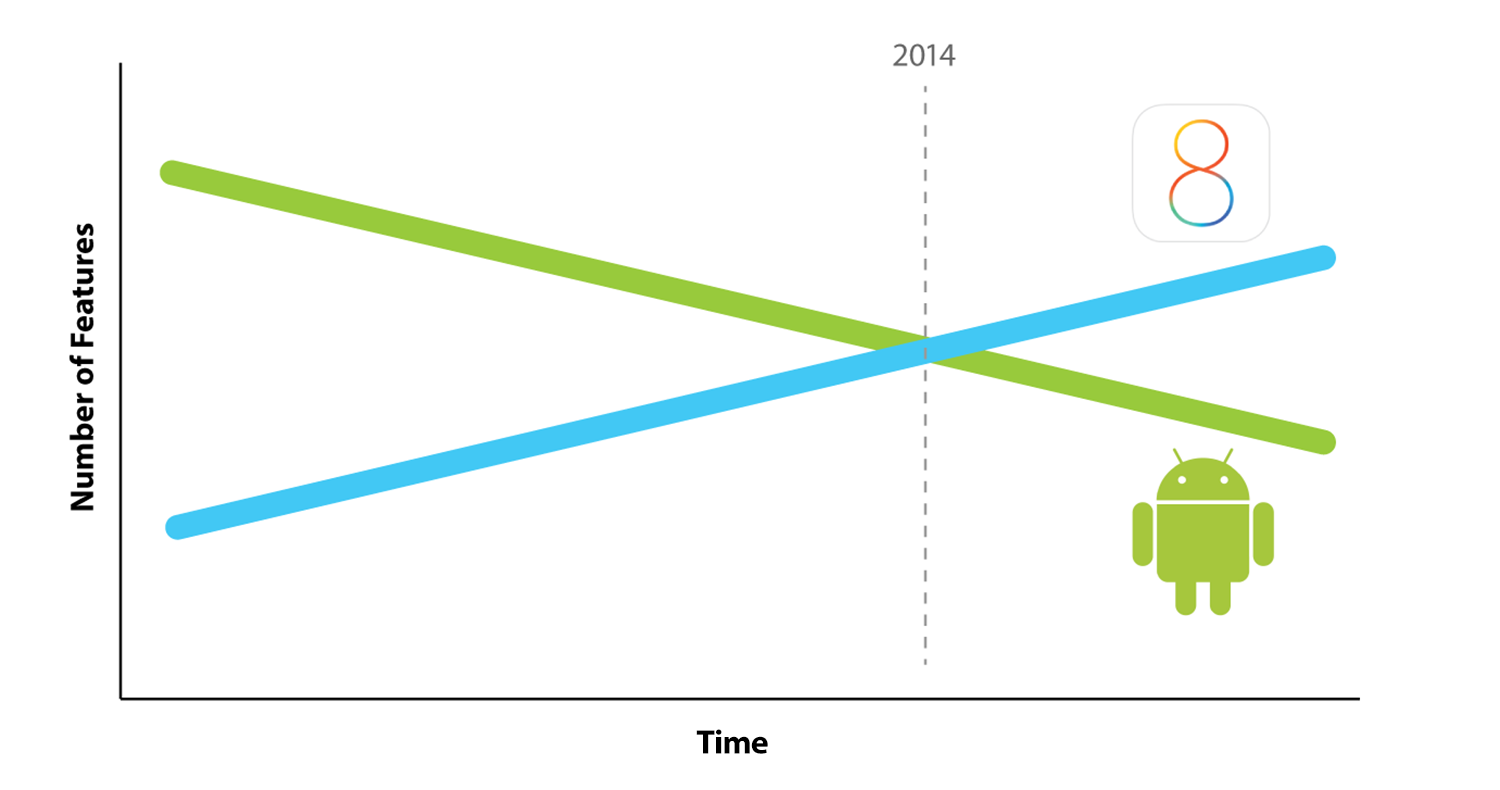Good artists copy; great artists steal.
-Picasso
A famous quote about creativity often attributed to Picasso. But what can we actually learn about creativity from studying thieves? And did Picasso even say it?
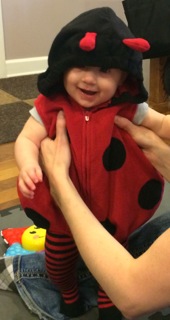 Happy Halloween! I haven’t cared for ages. But, now I have someone in my house like this. My 5 month old ladybug :)
Happy Halloween! I haven’t cared for ages. But, now I have someone in my house like this. My 5 month old ladybug :)
I find myself at the nearest drugstore constantly buying diapers, and I can’t help notice the holiday on sale. Candy, makeup, masks. Especially the classic: Frankenstein.
Most of us don’t realize our use of Frankenstein’s name is wrong. Frankenstein was the name of the scientist, Victor Frankenstein. The monster didn’t have a name.
In the book, he’s called monster, creature, fiend, even devil. If anything, the monster’s name is Adam.
I am thy creature: I ought to be thy Adam, but I am rather the fallen angel, whom thou drivest from joy for no misdeed
-The “monster”
But the big thing most don’t realize is that the story of Frankenstein was written by François‐Félix Nogaret.
Wait that doesn’t sound right. Wasn’t Frankenstein written by Mary Shelley?
Julia V. Douthwaite, a professor at The University of Notre Dame, recently uncovered a story by French author François‐Félix Nogaret, written years before Mary Shelley was even born. The story is about an inventor named Frankenstein who creates an artificial man.
Mary Shelley stole the idea of Frankenstein.
Cars were supposed to be the solution to lost or stolen horses.
When I leave my machine at the door of a patient’s house I am sure to find it there on my return. Not always so with the horse: he may have skipped off as the result of a flying paper or the uncouth yell of a street gamin, and the expense of broken harness, wagon, and probably worse has to be met.
-An excited new automobile owner from 1901, found in the book Stealing Cars
Instead, cars have been the object of thieves attention since they were first invented. Motor vehicle theft, also more popularly known as grand theft auto (amongst police and video game playing teens), is an enormous problem and a multi-billion dollar industry for thieves.
By many counts, a car is stolen in the US every 30 seconds. Of those stolen, only about 12% are ever recovered. And the problem is all over the world. 1 in 6 cars on the road in the Czech Republic are stolen vehicles or contain stolen parts.
But today, with the advent of Vehicle Identification Numbers (VINs), a stolen car isn’t that valuable sold on its own. If you had a stolen car and changed its plates, its VIN is still etched or stamped onto 20 or more pieces of your car. The dashboard is the obvious place you see it. But it’s on the engine. The doors. Some cars even have the VIN etched onto all the windows.
And so, a stolen car is easy to identify. As a whole.
Professional car thieves know that as soon as you steal a car, your next immediate task is to get it to a chop shop. A chop shop is an illegally operating garage that specializes in taking a car and almost literally chopping it into pieces. In less than an hour, a stolen car is chopped. Seats, windshield, airbags – every individual item is removed. Things with VINs are dumped, destroyed, or melted down.
Now, thieves have extremely valuable parts on their hands. Wheels, entertainment systems, air bags – all can go for hundreds to thousands of dollars on their own. Even melted down. A catalytic converter contains platinum going for $1500 an ounce.
And in their sale, they can’t be traced back to the original owner or the crime.
Professional thieves have figured out that there isn’t much use to stealing and reselling an entire car. The value is in deconstructing the car, and utilizing the individual pieces.
Many people also don’t realize Mary Shelley’s Frankenstein is subtitled “The Modern Prometheus”, as the subtitle doesn’t appear on modern editions of the book.
Prometheus is a tale from Greek mythology, probably 3000 years old. Some versions of the myth have Prometheus as the architect of mankind, fashioned out of mud and fire. Shelley’s monster was created with flesh and lightning.
Shelley didn’t just steal from Nogaret. She stole pieces of work from a countless number of places. Like Greek mythology. Like Milton’s Paradise Lost, an alternative genesis story about Adam, God, and Satan.
Like Adam, I was created apparently united by no link to any other being in existence many times I considered Satan as the fitter emblem of my condition; for often, like him, when I viewed the bliss of my protectors, the bitter gall of envy rose within me.
-The “monster”
Like Coleridge’s The Rime of the Ancient Mariner. Mariner and Frankenstein both use a similar narrative technique of one character telling another character the story, and interrupting the narrative to make sure the reader is reminded of that fact.
She stole from Giovanni Aldini and Johann Konrad Dippel who were scientists in the late 1700s who were trying to sustain or create new life with electricity and chemicals.
Shelly even stole narrative and character ideas from her own mother’s novel, A Vindication of the Rights of Woman.
But you wouldn’t know these things unless you did a lot of research and could spot the elements. Nogaret and Shelley might have a main character with the same name creating an artificial man, but that’s largely where the similarities stop. The stories are completely different.
And that’s because Shelly did what these car thieves excel at: break things down, and find new value in the parts.
Amateurs tend to be poor at imitation. When they see an idea, they clone the whole thing and offer it as their own work. The pro knows to chop these things into pieces and find new uses for them.
One of my favorite books to recommend to developers who feel like they can’t design is Jarrod Drysdale’s Bootstrapping Design. He outlines a way novice web designers can do what Mary Shelley did:
-
Find 3 sites that inspire you.
-
Steal the layout from one, color scheme from another, and typography from the third.
-
Combine those three, and you’ll realize you’ve created something original.
I’ve made something called Draft, software to help people write better. The homepage has served me well in getting traffic and getting people to sign up:
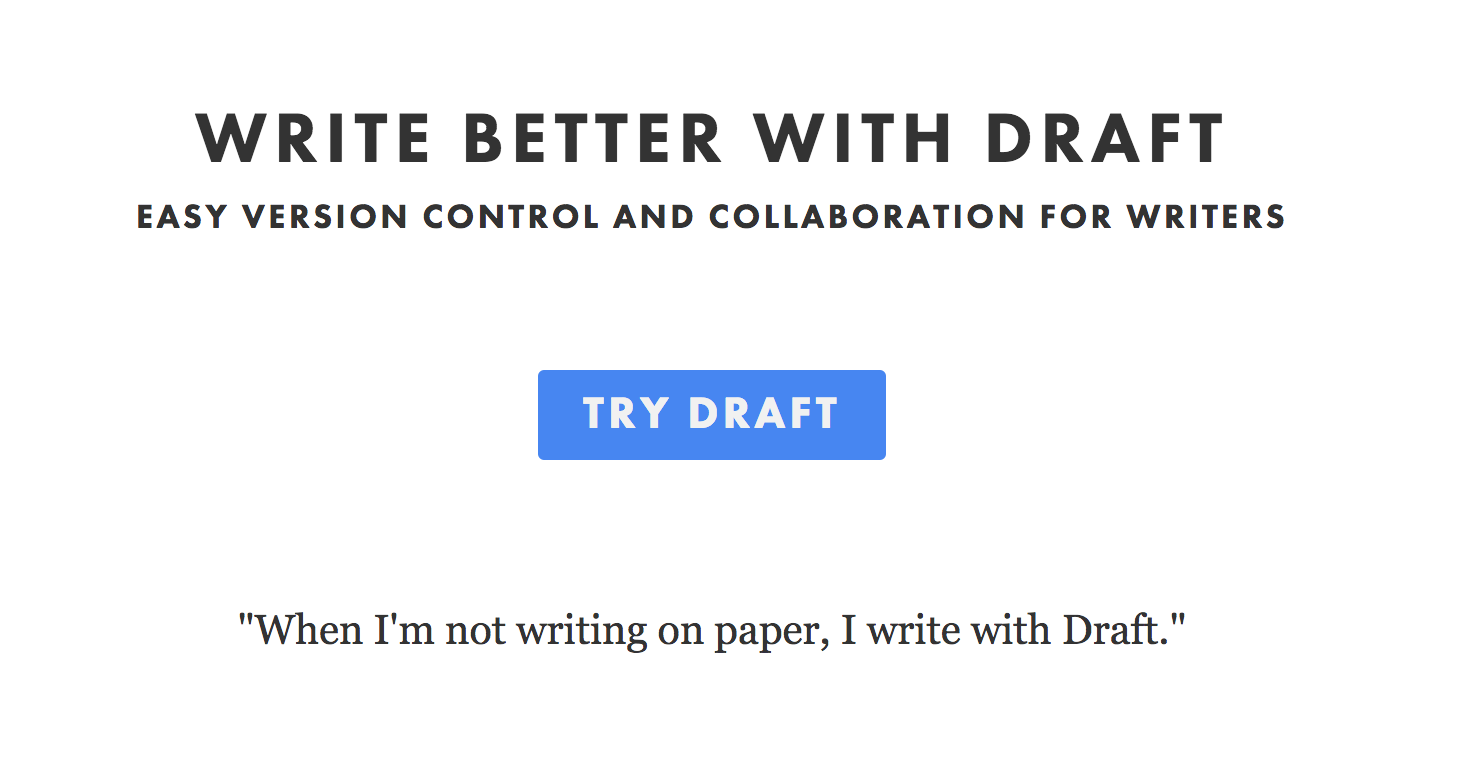
But it’s actually a combination of things I’ve stolen. The font I stole from Field Notes, these beautifuly designed notebooks from Aaron Draplin and Coudal Partners. They introduced me to Futura, and I fell in love.
The layout was stolen from Google. Simple, centered, almost nothing on the page, just click the button and get started.
There’s a little animation to the headline that drops in – stolen from DuckDuckGo’s previous design, a great search engine built by Gabriel Weinberg. Their logo had a similar animation when the page loaded.
Even the blue button came from some place I can’t remember now. But I was on a site, saw the blue they were using, and decided it would make a great link and button color.
On and on, I’ve deconstructed these other sites into pieces and mixed them together into something new. Something original.
Now, I’ve recently taken over as the CEO of Highrise, and as we look at things to improve and redesign, I see us doing the exact same thing.
I hired the very talented designer, Wren Lanier, and the first thing she asked me was: send me all the sites and designs that inspire you.
And as you’ll see, when we launch our new homepage soon, it will come off as original, because it is. But lots of elements on those pages are because Wren or I liked a button here, a color there, a font somewhere else.
Here’s an illustration that you might see soon on the new Highrise homepage, describing Highrise as a “Secret Weapon.”
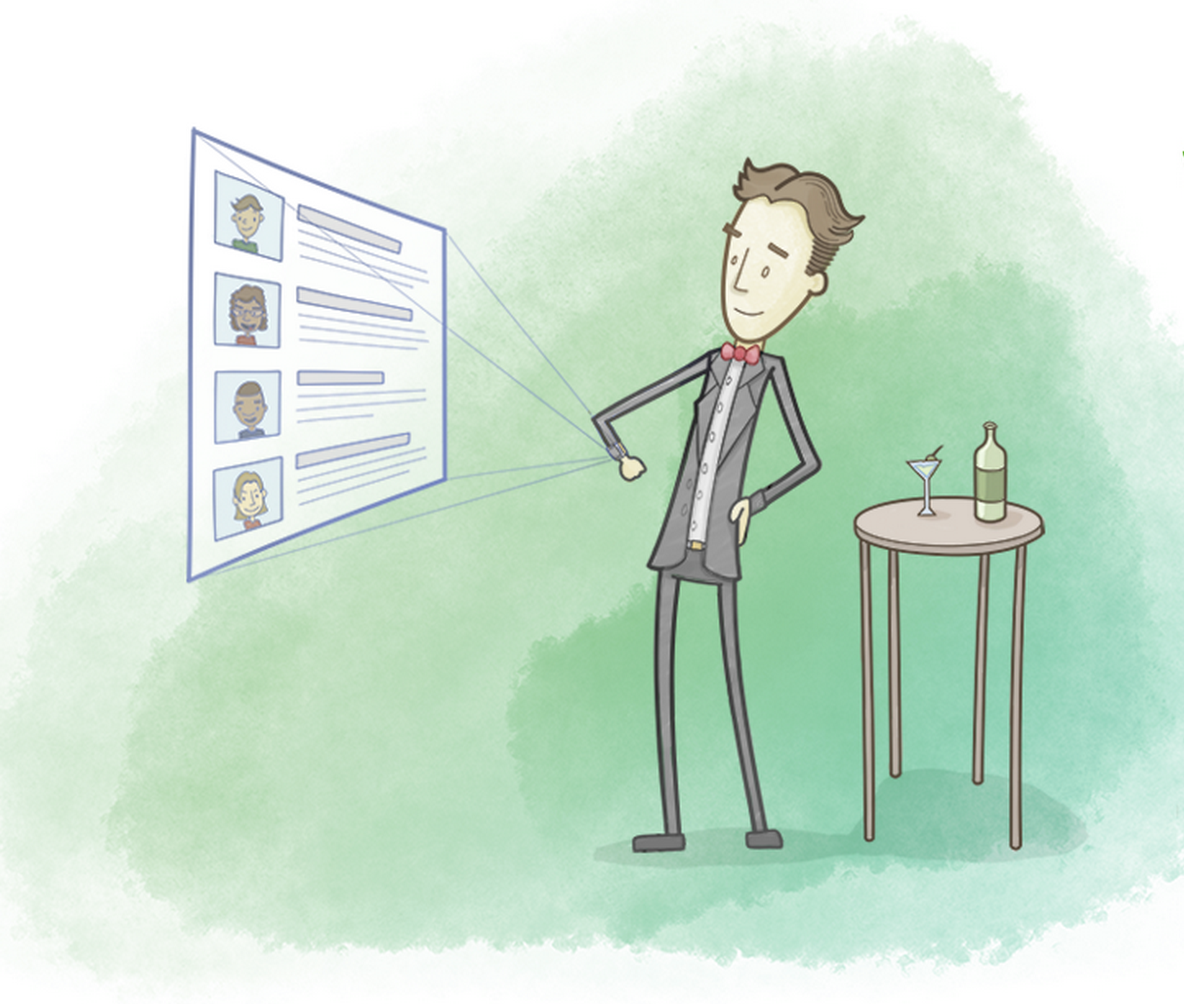
A beautiful original “shaken” from a designer and artist I hired, Brad Colbow, but you can spot where inspiration came from.
That quote “Good artists copy; great artists steal,” is often attributed to Picasso. But that’s not what he actually said. According to The Quote Investigator, that’s Steve Jobs’ version as he was trying to quote Picasso.
Picasso has also been quoted as saying:
Bad artists copy; great artists steal.
But a 1974 book, mentioned William Faulkner said:
Immature artists copy, great artists steal.
But it was T.S. Elliot who in 1920 wrote:
Immature poets imitate; mature poets steal.
And it was Alfred Tennyson in 1892 who wrote:
That great poets imitate and improve, whereas small ones steal and spoil.
All these great artists, Jobs, Picasso, T.S. Elliot, stole parts, added their own, and inspired the next – just like professional car thieves, clever enough to deconstruct the originals, and use the pieces to create something much more valuable.








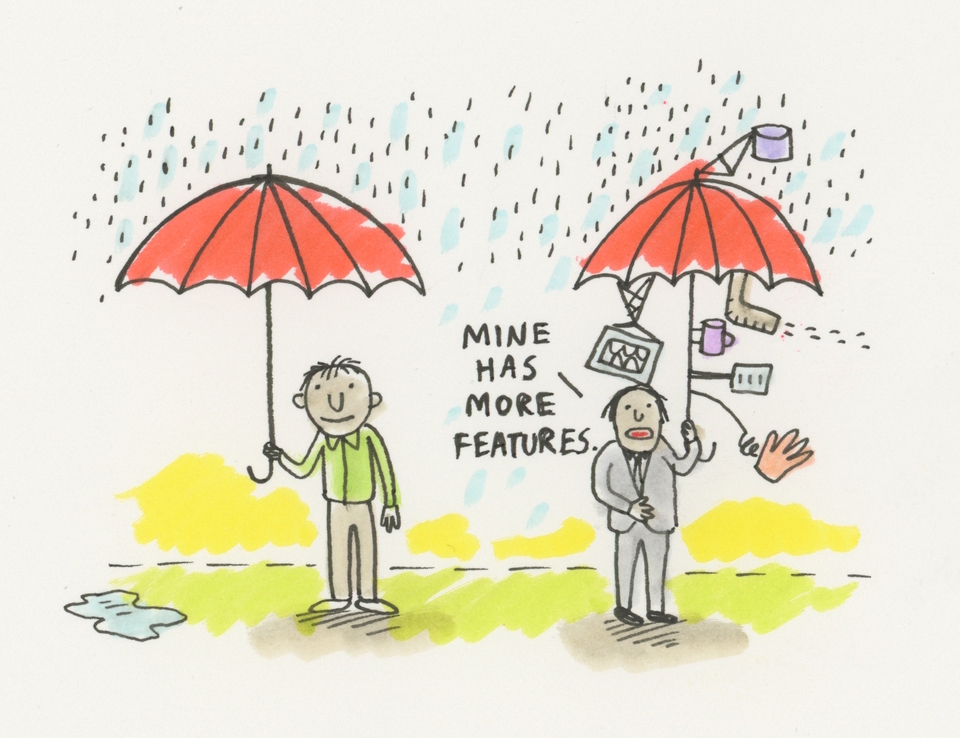

 Happy Halloween! I haven’t cared for ages. But, now I have someone in my house like this. My 5 month old ladybug :)
Happy Halloween! I haven’t cared for ages. But, now I have someone in my house like this. My 5 month old ladybug :)




